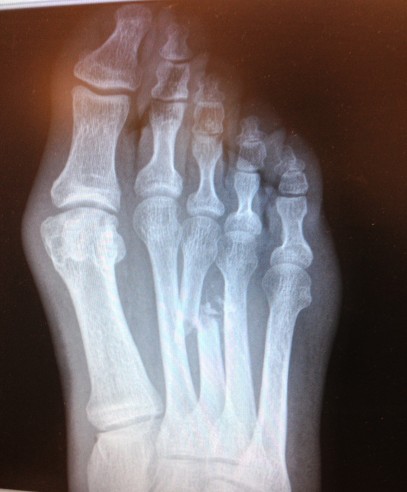At Greater Houston Foot & Ankle Specialists, we treat fractures of the foot and ankle. Your foot is a complex part of the body that contains 26 bones. From stress fractures to fractures caused by an injury, we specialize in fracture treatment.
After examining your x-rays for the amount of fracture displacement and angulation (stability of the fracture), we will determine if the fracture can heal in it’s current position or if it needs surgical repair. Most commonly these injuries can heal without operative treatment.
Common Symptoms of a Fracture
Fractures typically heal in 4-6 weeks in healthy patients who stay off of their injured foot or ankle. For all patients, immobilization is a critical part of treatment because any movement of bone fragments slows down the healing process.
Factors for increased fracture healing time
-
Movement of the bone fragments (walking too soon)
-
Diabetes
-
Smoking
-
Kidney disease
-
Poor nutrition
-
Advanced age
-
Severe fractures
How does bone heal?
All broken bones go through the same healing process. This consists of three overlapping stages: inflammation, bone production, and remodeling.
-
Inflammation starts immediately after the bone is fractured and lasts for several days. When the bone is fractured there is bleeding into the area, leading to inflammation and clotting of blood at the fracture site. This provides the initial structural stability and framework for producing new bone.
-
Bone production begins when the clotted blood formed by inflammation is replaced with fibrous tissue and cartilage (known as soft callus). As healing progresses, the soft callus is replaced with hard bone (known as hard callus) which is visible on x-rays around 4 weeks after the fracture.
-
Bone remodeling, the final phase of bone healing, goes on for several months. In remodeling, bone continues to form and becomes compact, returning to its original shape. Once adequate bone healing has occurred, weightbearing (standing or walking) encourages bone remodeling.
Be sure to seek medical attention for any suspected fracture of the foot or ankle. Make an appointment with Greater Houston Foot & Ankle Specialists.
Dr. Stephen Moore and Dr. Gkotsoulias are podiatrists serving
The Woodlands, Kingwood, Spring, and Tomball areas.

